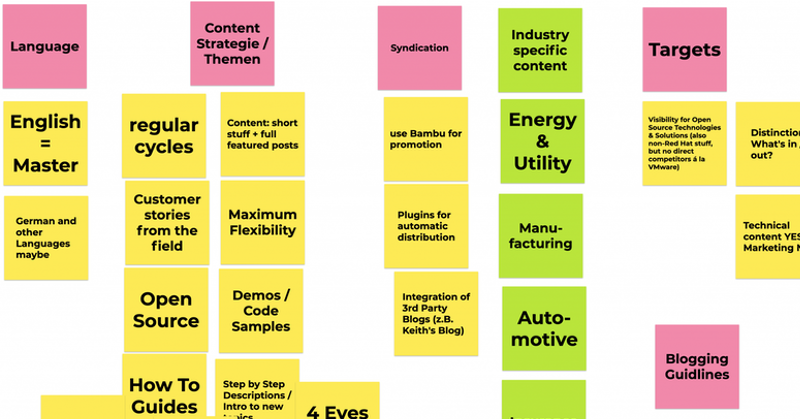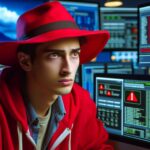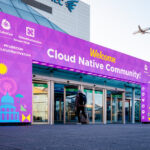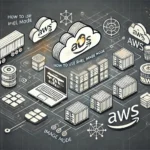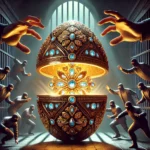How we came here
Everyday we get in touch with the hottest trends in IT, try out thrilling (new) Open Source projects, and hear from our customers about the business perspective on technology. This has been happening for years now.
We realized that all this knowledge and experience was more or less distributed across our heads, multiple GitHub pages, internal websites et al. There was no single place where others could benefit from our insights. Since most of us happen to work for Red Hat, we deserved to tackle this problem with Open Source principles in mind.
We, therefore, decided to create a platform to transparently share our knowledge: Open Sourcerers was born!
Meet our chief editors

That’s me: Born in the same year as Linus Torvalds (1969) and seeing personal computing rise while growing up, I probably was doomed to work in Open Source. I have three children and enjoy running or riding my bicycle(s). From time to time I play the bass guitar for the Best Dressed Tables. You can find me on Twitter as @opensourceingo.
My favorite Open Source projects: Audacity, Fedora, (La)TeX, Linux, Python
Linux and Open Source software crossed my path during my work as a theoretical physicist at my university. I was fascinated by its freedom and flexibility and from there on it guided me throughout my entire career. I was part of the first inroads of Open Source in large corporations. From there on I always worked on integrating and extending Open Source solutions in the enterprise market.
It started as an exotic adventure and now it has become mainstream. An incredible journey so far and I am very curious about what will come next! One thing I surely learned: The innovation in the Open Source community should not be underestimated. There are always tons of projects around that are not on the radar yet, but some of them will be mainstream in a few years. Or did you hear of a thing called “Kubernetes” in 2014? My goal for this blog is to shed a (spot)-light on some of these new innovations to make them known to a broader audience.
In order to stay in touch with this wonderful community, I work at Red Hat as a Solution Architect and I am responsible as Chief Architect for the logistics, retail, travel, and energy industry in Germany.

My favorite Open Source projects: Git and Apache Camel – both useful and also level setting from a design / concept standpoint!
I hope that our blog is entertaining and valuable to you. I was born into the CMB 2000, C64, Atari, and CPC464 generation, before I started coding on MS-Dos with Pascal, C++ during school times.
Trying to understand backgrounds better, I studied system electronics after my apprenticeship in the same field. While learning VHDL, FPGAs, and how to build computers, I was conducting LAN and WAN building projects and related Data Center projects on a large scale.
At the end of the first internet boom, I switched back to my school time favorite:
Software Development! Over the years I was involved in building various platforms from the finance industry to media and social networks. I learned a lot of good craftsmanship building a platform product for trading and calculating loans and savings, which kept me busy for four years.
I learned the power of proper build scripts, CI/CD, unit and integration testing, model-driven architecture, etc., and suffered from lacking discipline and the benefits from solid groundwork.
Having failed also on bad scoped, misled endeavors, I was later introduced to the white magic of how to build and lead teams successfully ;-). This made me a happy, successful scrum & agile cultist and can call me now a versatile, educated agile program lead.
I strongly believe that technology, technique, and technic need to go well balanced, and the first thought needs to be: “What is the business problem to be solved, and is it properly scoped and described”.The second thought needs to be: “In what political and cultural setting am I”, as well as “Who are my peers and stakeholders”.
OpenSource is for me a most powerful strategy because people decide to work jointly, in a collaborative manner, united by a goal they want to achieve, and they retrospect and review results with and by that passion that feeds in learning, optimizing their efforts – and that proves how key a proper vision and mission is – written or told.
Obviously, that made “Next-Gen Architecture, Culture, and Processes” my home on opensourcerers.org.

That’s me: https://blogs.pfuetzner.de/matthias
My favorite Open Source projects: From the past: X11 Today: TrueNAS
Open Source is not only a thing of the last six months to me, I was using it before it was even known under the term “Open Source”. Things, like Minix, the X Window System, GNU (starting mainly with its early flagships “product” Emacs), OSF/Motif, etc. were my daily business. They became a lifestyle for me, which influenced how I act and live. “Being open” now is inscribed into everything I do. Sometimes that can be very direct, but it is always meant to be for the better because Open Source also means to openly share ideas so that these ideas can influence each other and create more than the sum of its pieces. After more than 8 years in a publicly funded R&D company close to a university, an additional more than 14 years at Sun Microsystems (and Oracle) I’m now already more than 8 years the Solution Architect for Cloud here at Red Hat in Germany. As such, I look after the entries here in the blog, that cover Cloud topics more from the infrastructure and less from the developer point of view, and am open to your ideas and proposals on what we can cover in future entries.

That’s me: https://about.me/torbenjaeger
My favorite Open Source projects: FreeBSD, OPNsense, TrueNAS, Fedora, OKD, Quarkus
Open Source is the key driver of innovation. But there’s a ton of information out there and time is valuable. Red Hat builds its products from the best-of-breed Open Source projects to make Open Source ready for the enterprise. We here at OpenSourcerers.org have the same goal: provide you enough information from the field first hand to successfully leverage Open Source in your projects. I myself have spent the last 20 years in different key areas of application development: development itself, homegrown and custom-built DevOps-kind of thing for a 3-digit headcount development team, consultancy, and ops side of things. Now I’m part of Red Hat’s sales organization bringing my vast experience to our customers by advising them on digital transformation in setting up automation and standardization with container technology.
We distillate the essence of what brings you value in exchange for your time. If you think we’re on the wrong track, please let us know immediately. That’s what Open Source is all about! Make your voice heard!

Open Source is what got me into IT and is what keeps me going. My first contact with Linux was during my university days majoring in Geosciences something like 25 years ago. I was impressed by what can be done when communities work together and use an Open Source development model. So instead of examining rocks for a living I joined one of the first German Open Source solution providers as a consultant and have never looked back.
It’s so great to see that these days Open Source is the base of all defining IT technologies, be it cloud or containerization and DevOps. I’ve always been enthusiastic about all areas of Linux-based infrastructures and have done a fair bit of consulting in this area. I’ve been with Red Hat as a Solution Architect now for more than 7 years, supporting our business partners.
Since Red Hat has acquired Ansible, Inc this has become my pet product and I enjoy helping Red Hat customers and partners to realize Ansible’s full potential.

Open Source software once started within a university context, where it was the most natural thing in the world to share results with others, in order to take advantage of exchange without barriers, and merging all the concepts and efforts to let the best ideas win. Even software on the commercial side at that time, in general, had been open, so that customers could develop a deeper understanding of their systems and make adjustments wherever necessary. Once software became intellectual property and got protected as commercial value, some software companies started hiding their source code for protecting their investments and especially for securing their revenue by creating vendor lock-ins. This was the time when I personally started with the first projects as a student and later as an associate at university. My initial fear that developing together in a community would end up in absolute chaos, fortunately, proved (mostly) reasonless. Of course, we needed some time to establish best practices for community processes and organizations. Today, we’ve learned that Open Source becomes more and more important again, because Open Source still reflects the combined power of open, be it for addressing needs, for asserting interoperability, or for fostering innovation. My playground now after 5 years at Red Hat is mainly the Public Sector, where there is an additional value of Open Source, which is called Digital Sovereignty. My favorite Open Source project was and still is MAME.
What to expect from us
We will continue to create visibility for exciting Open Source technologies and solutions that make an impact: on ourselves, our business, our customer, and the world.
Sebastian. Daniel. Ingo. Michael. Matthias. Torben. Götz. Ansgar.

